For the first time, 42 photographs by Gianni Berengo Gardin taken for the Marazzi series, executed in 1977 after Marazzi, a leading company in the ceramic manufacturing industry, had invented rapid single-firing in 1974, a revolutionary technological patent that changed the tile production process forever, will be on public display. In order to document this technological leap, which was fundamental not only for the company but for the entire industry, three years later Berengo Gardin was invited to make a documentation of these new production lines.
From Sept. 12 to Nov. 3, 2024, on the occasion of the 24th edition of festival philosophy (Modena, Carpi and Sassuolo, Sept. 13, 14 and 15, 2024), in the spaces of the Sale della Musica, degli Incanti e dei Sogni (Music, Enchantments and Dreams Rooms) of the Palazzo Ducale in Sassuolo - Gallerie Estensi (Modena), Marazzi Group therefore presents the exhibition Gianni Berengo Gardin. Marazzi, the fast lines, curated by Alessandra Mauro. The exhibition, produced in collaboration with Gallerie Estensi, Contrasto, Fondazione Forma per la Fotografia and the Gianni Berengo Gardin Archive, celebrates the 50th anniversary of the patent of the single-firing fast lines by presenting a valuable body of photographs taken by Gianni Berengo Gardin for the company, far from just traditional documentation photography but almost unique in the history of the great photographer.
When Berengo Gardin began his work, he was immersed in an orderly, functional environment with an international scope. What particularly fascinates him is the speed of the production process and the incessant movement of the conveyor belt, where colors, shapes and patterns mingle in a dynamic vortex. The focus of his project then immediately becomes the lively and colorful rhythm of production, very different from what he had observed in other industrial settings in which he had previously worked. The images made by Berengo Gardin are thus transformed into fragments of a photographic fresco that comes to life in the context of the work. This space, initially concrete, gradually takes on an abstract character, animated by a dynamic and continuous flow. Within it develops a pressing carousel, a kind of vibrant dance of colors and forms, capturing the essence of the productive movement.
“It was immediately clear to me how the professional challenge was to be able to capture the fast flow of colors, the dynamic wake of forms,” Gianni Berengo Gardin points out. “Color, which I always used very little, imposed itself, therefore, as a choice. I also tried to work differently from what I normally did. Here I often changed the distance, getting very close to the subjects, in order to be able to capture the details, the fragments of what I was seeing and thus make photos different from the others: dreamy, colorful, almost abstract. I am grateful to Marazzi for allowing me the freedom to make photographs like these, abstract, that somehow anticipate a conceptual approach unusual at that time in industrial photography where, generally, a more objective, documentary documentation of the product was required. A feast for the eyes and, for me, a very original work.”


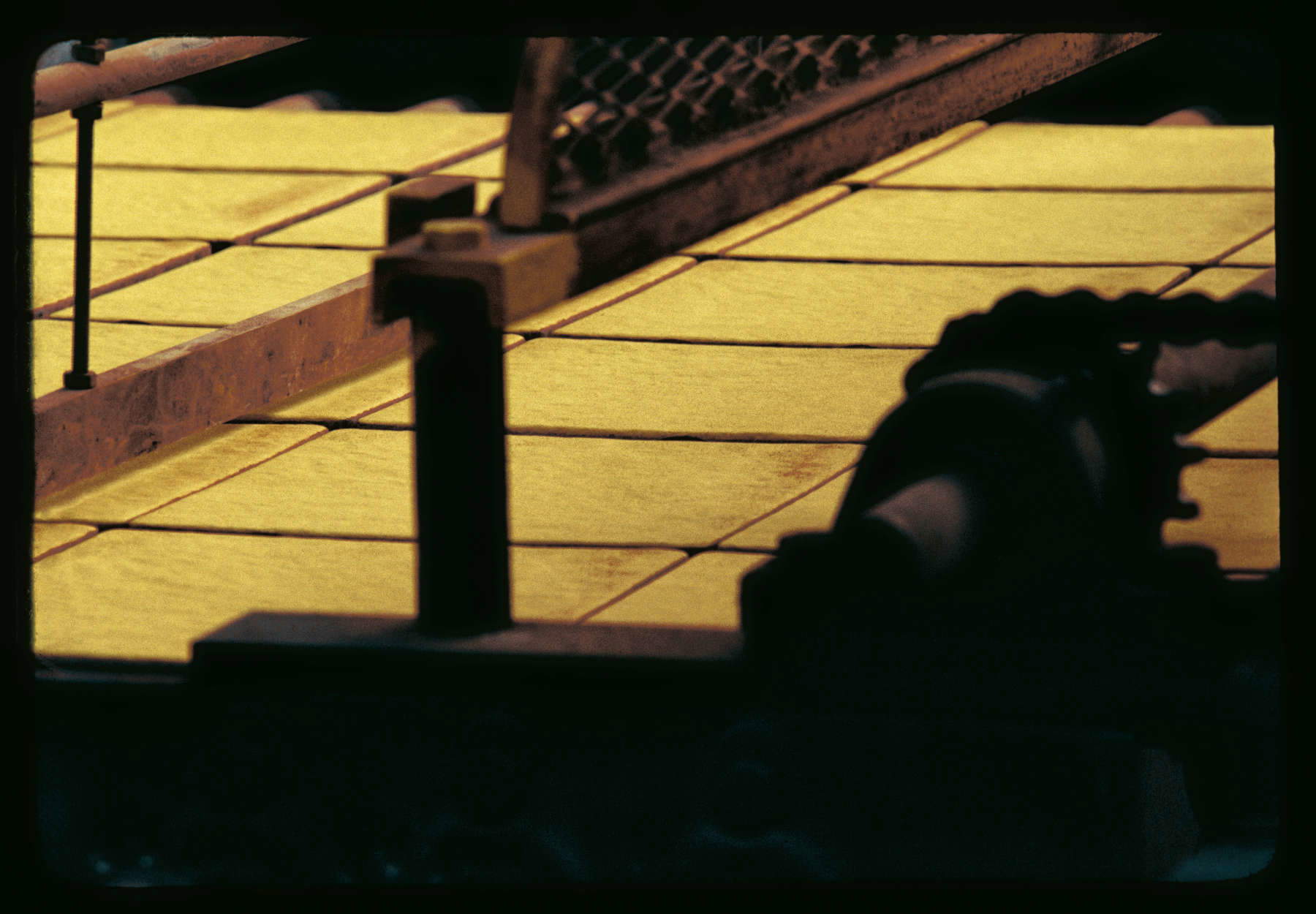
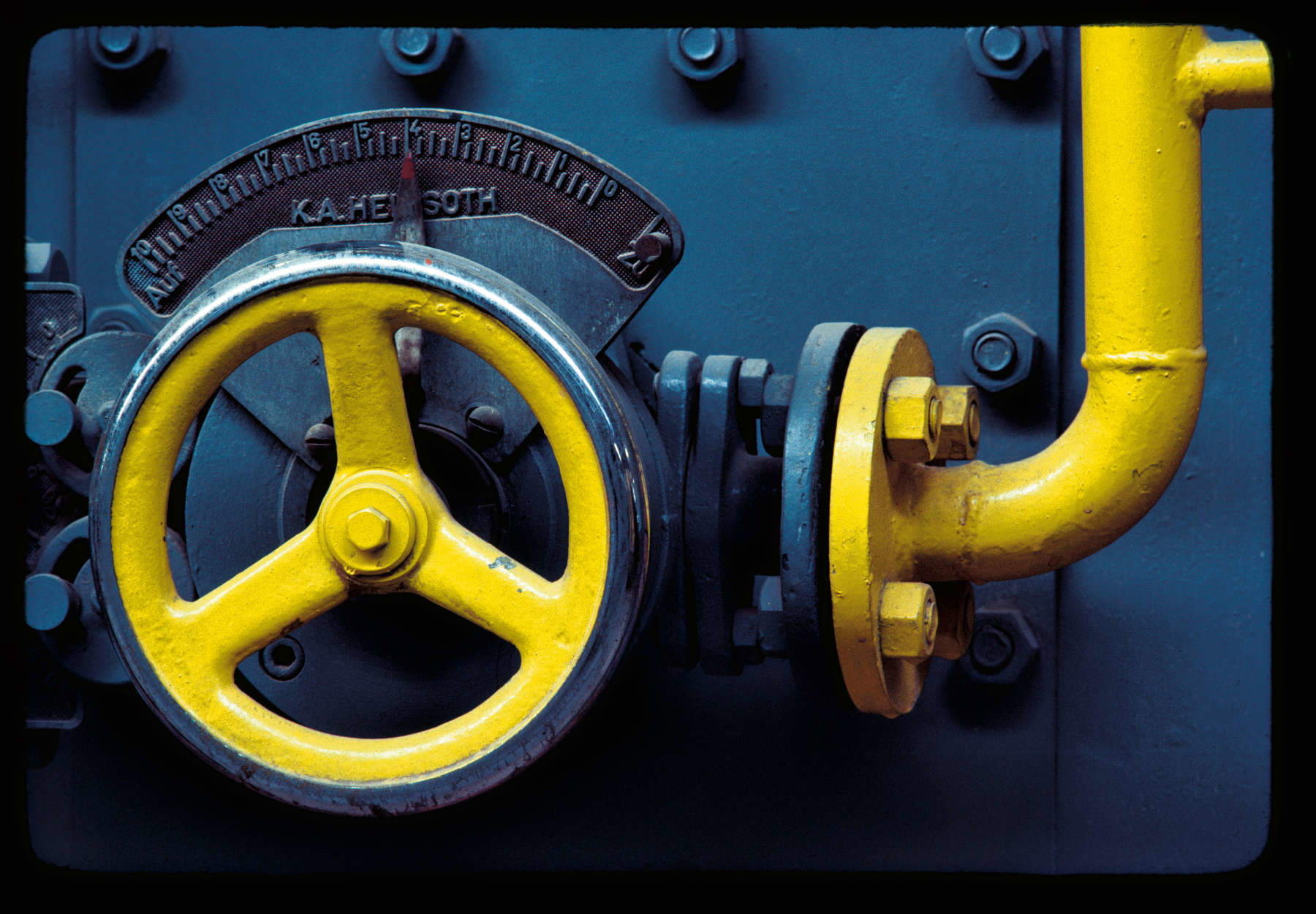

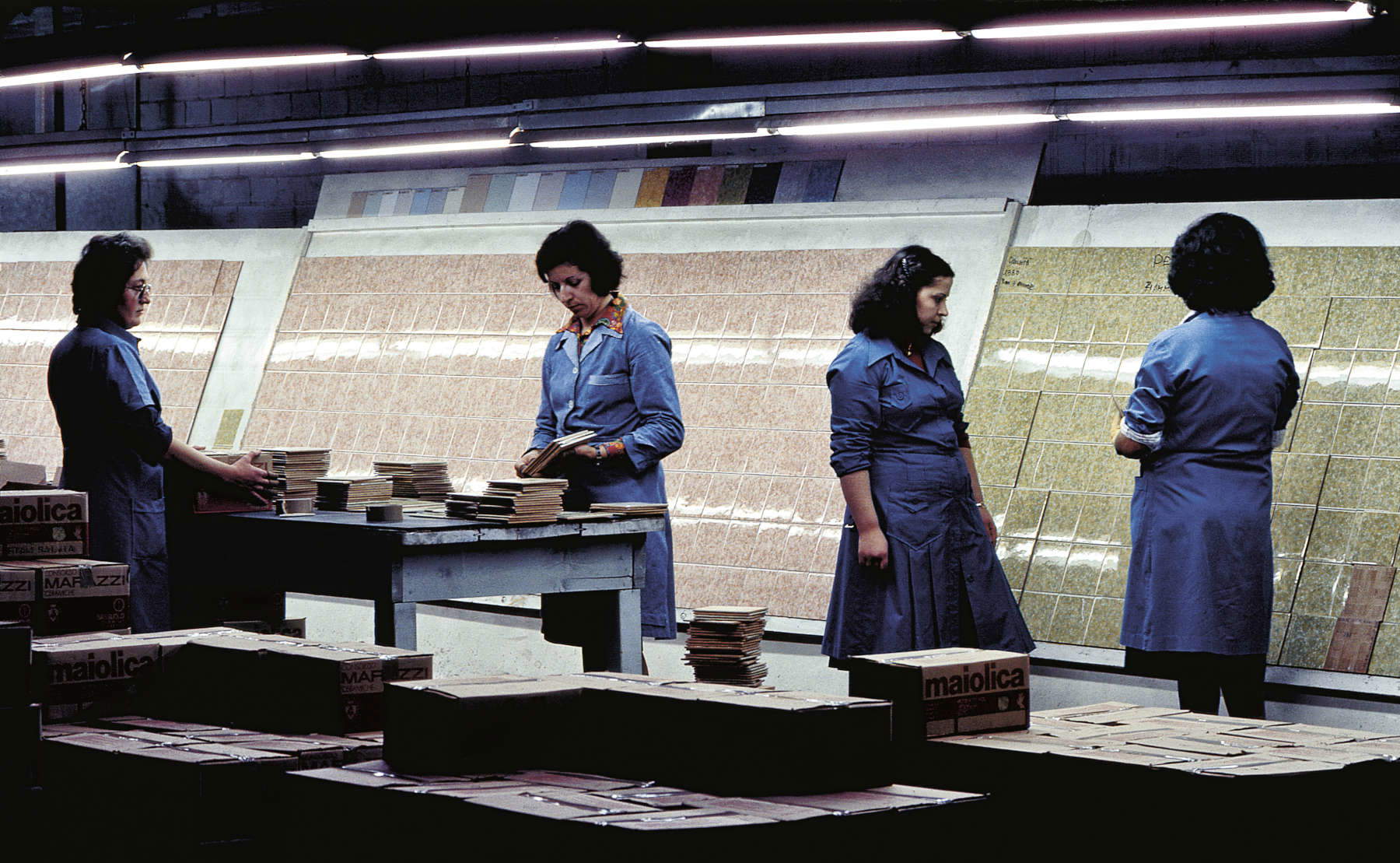
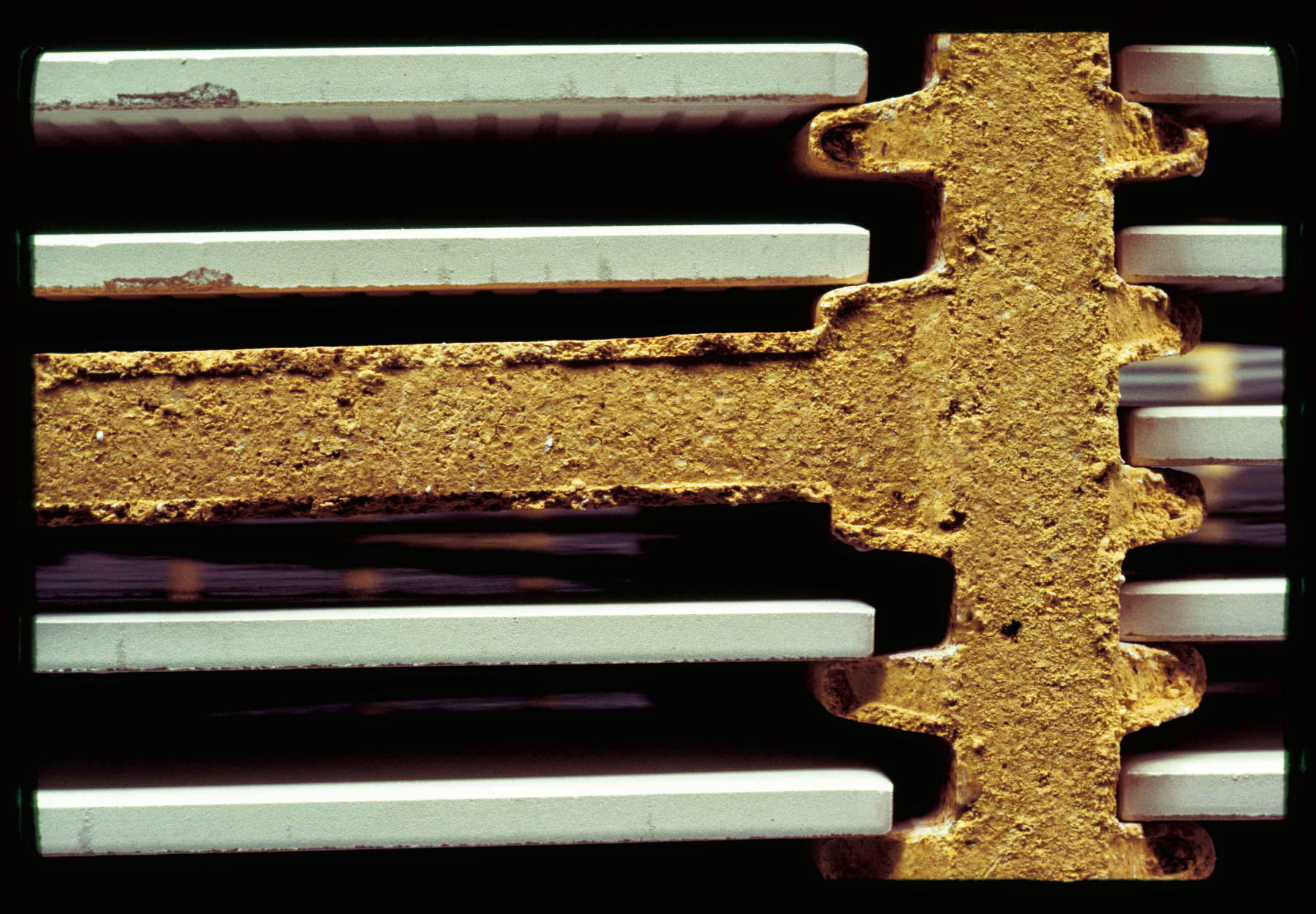

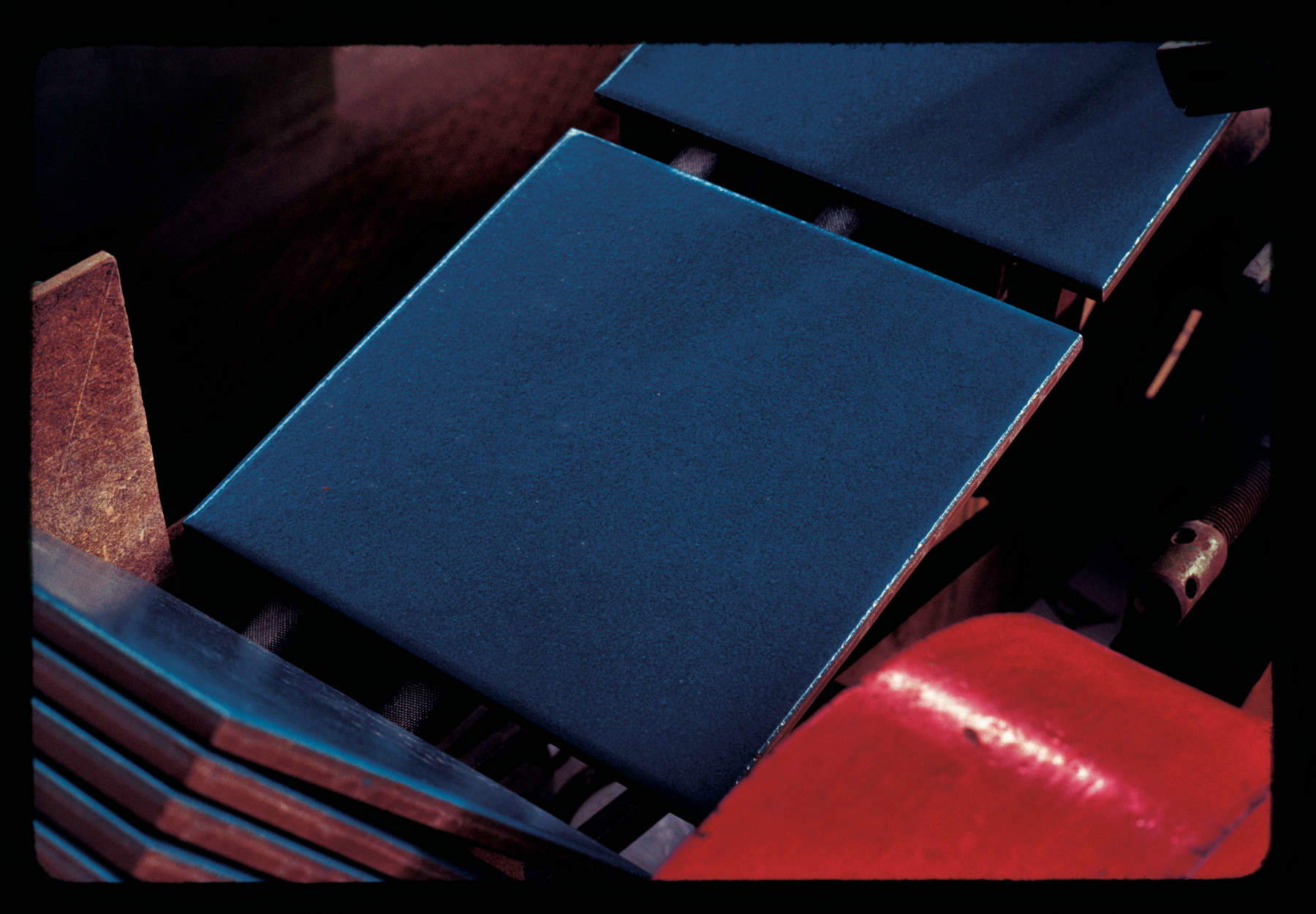


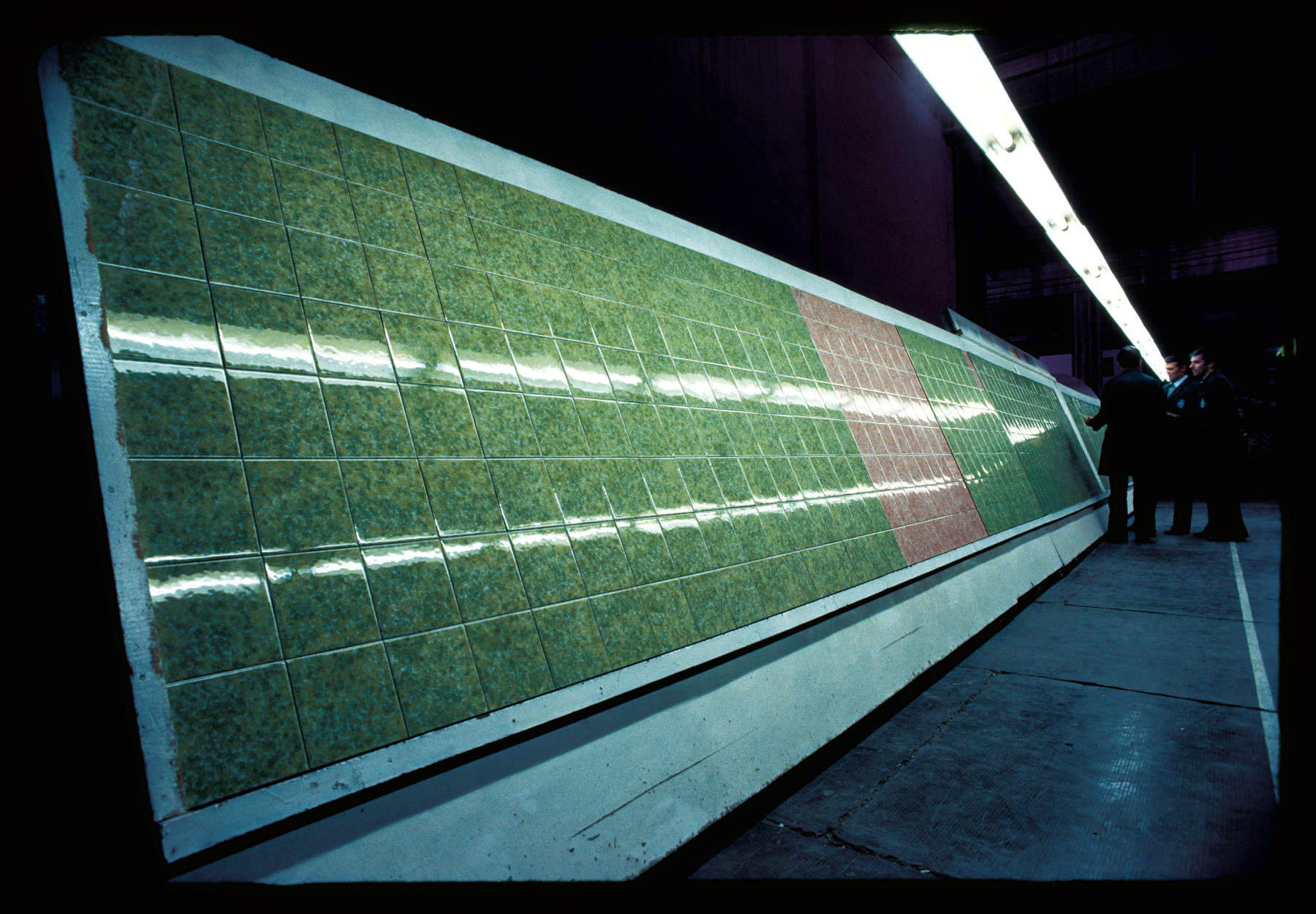
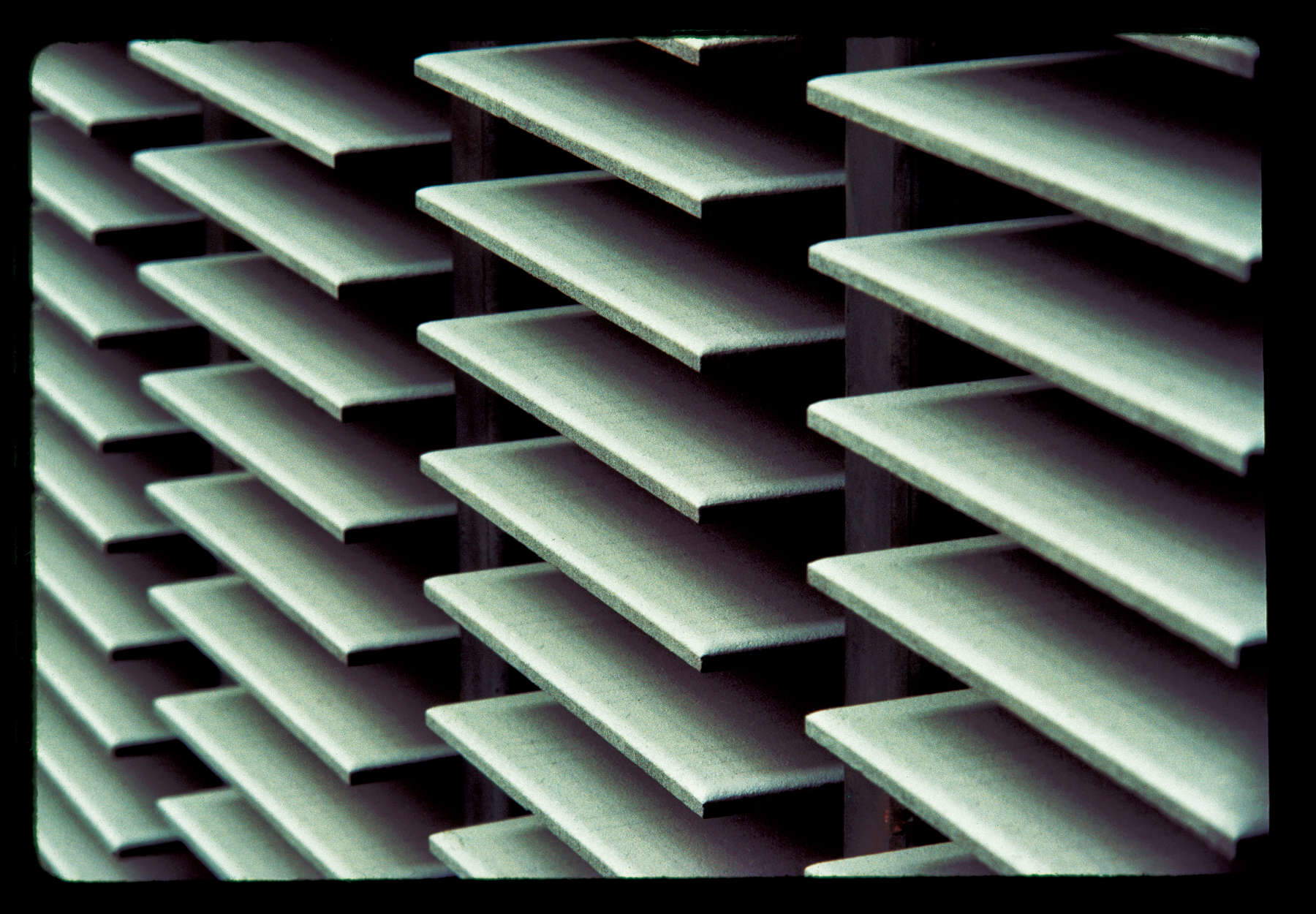
Gianni Berengo Gardin. Marazzi, le linee veloci presents for the first time a selection of 42 works from this unique series, in which not only the use of color, so rare in the photographer’s production, but also another unexpected element stands out. As curator Alessandra Mauro states, Berengo Gardin in this photographic series. “abandons the proper distance of the social photographer, the one he has always used to portray people, approaches the gears and realizes a series of macro visions for an almost abstract narrative made of isolated elements, of dynamic forms, of strips of color that turn and get lost, of skilful hands that move on the ribbons. (...) With this body of images made for Marazzi, the author proves not only that he can move as always with exact attention and subtle poetry, but that he can also stop, in so many fragments of a second, the colorful and fast time of the changing work.”
“The relationship between Marazzi’s production and the artistic expressions of the visual arts, architecture, fashion and design is a history that has repeatedly intertwined and has met great masters of the lens, such as Luigi Ghirri, Charles Traub or Cuchi White, and of the pencil, such as Gio Ponti, Nino Caruso or Paco Rabanne, leaving them free each time to experiment and to tell Marazzi from their point of view,” says Mauro Vandini, CEO Marazzi Group. “It is a thrill to rediscover, in these photographs by Gianni Berengo Gardin, the factory of that time and that attitude to experimentation that Marazzi has continued to cultivate over time, flanking research into new products and processes with the promotion of different, personal, auteur readings of ceramics and work, which represent for us today an invaluable heritage, accumulated over now 90 years of history, and an inexhaustible source of inspiration.”
“The Estensi Galleries have always built and fostered public-private partnerships, even in the wake of ministerial directives,” says Alessandra Necci, Director of the Estensi Galleries. “Collaboration with globally excellent entities in the Modena and Sassuolo area is very virtuous, particularly in the ceramics sector in which the Marazzi group operates. We are therefore pleased that the partnership between Gallerie Estensi and Marazzi continues with excellent results, with the prospect of further development in the future.”
Gianni Berengo Gardin. Marazzi, le linee veloci is also the title of the volume published by Marazzi Group and Contrasto, with texts by Alessandra Mauro and Gianni Berengo Gardin, which brings together a selection of 42 works from the photographic series created in 1977 for the company.
 |
| On display for the first time are 42 shots from the Marazzi series by Gianni Berengo Gardin |
Warning: the translation into English of the original Italian article was created using automatic tools. We undertake to review all articles, but we do not guarantee the total absence of inaccuracies in the translation due to the program. You can find the original by clicking on the ITA button. If you find any mistake,please contact us.